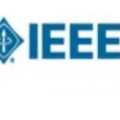Light-field cameras play a vital role for rich 3-D information retrieval in narrow range depth sensing applications. The key obstacle in composing light-fields from exposures taken by a plenoptic camera is to computationally calibrate, re-align and rearrange four-dimensional image data. Several attempts have been proposed to enhance the overall image quality by tailoring pipelines dedicated to particular plenoptic cameras and improving the color consistency across viewpoints at the expense of high computational loads. The framework presented herein advances prior outcomes thanks to its cost-effective color equalization from parallax-invariant probability distribution transfers and a novel micro image scale-space analysis for generic camera calibration independent of the lens specifications. Our framework compensates for artifacts from the sensor and micro lens grid in an innovative way to enable superior quality in sub-aperture image extraction, computational refocusing and Scheimpflug rendering with sub-sampling capabilities. Benchmark comparisons using established image metrics suggest that our proposed pipeline outperforms state-of-the-art tool chains in the majority of cases. The algorithms described in this paper are released under an open-source license, offer cross-platform compatibility with few dependencies and a graphical user interface. This makes the reproduction of results and experimentation with plenoptic camera technology convenient for peer researchers, developers, photographers, data scientists and others working in this field.
翻译:光场照相机在窄距离深度感测应用中为丰富的三维信息检索发挥着关键作用。用全光照相机拍摄的暴露光场形成光场的关键障碍是计算校准、重新对准和重新排列四维图像数据。我们提出了若干尝试,以提高总体图像质量,为此专门为特定的全光照相机配制管道,提高不同观点之间的颜色一致性,而牺牲高计算负荷。本文提出的框架预示了先前的结果,因为其具有成本效益的颜色均匀性,来自准反差概率分布和新的微型图像空间分析,用于通用相机校准,而不受镜头规范的影响。我们的框架以创新的方式补偿传感器和微镜网的文物,以便利用次抽样能力提高次光谱图像提取、计算重整和Scheimpflug的优质质量。使用既定的图像度量度比较表明,我们提议的管道在多数情况下都不符合最新水平的颜色均衡分布。本文中描述的缩略微图像空间空间分析法是在一个开放的图像化平台下推出的,这是一个开放的客户级的图像平台。




